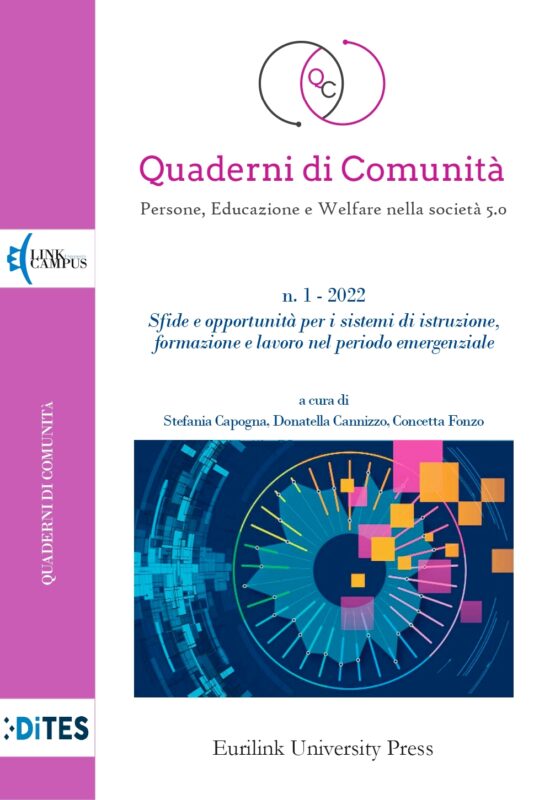Gamification in higher education: a self-determination theory perspective on the reward system
DOI:
https://doi.org/10.61007/QdC.2022.1.43Keywords:
flipped learning, moodle, active learning, achievementsAbstract
Educational gamification is a rising area, and several studies
have already been conducted in the context of Higher Education, with encouraging results, especially about the effectiveness of gamification in increasing students perceived motivation to learn. The authors of this
study explore how game elements commonly used in gamified learning systems, such as badges, points, progression bars and levels, can affect students motivation by fulfilling their needs for competence, relatedness, and autonomy, in the framework of the self-determination theory (SDT). The final goal is to better understand how to build the reward system of an educational gamified application aimed at maximising students motivation.
References
Ab Rahman, R., Ahmad, S., & Rabaah Hashim, U. (2018). The effectiveness of gamification technique for higher education students engagement in polytechnic Muadzam. International Journal of Educational Technology in Higher Education, 15(41). Retrieved from https://doi.org/10.1186/s41239-018-0123-0.
Alsawaier, R. S. (2018). The effect of gamification on motivation and engagement. International Journal of Information and Learning Technology. https://doi.org/10.1108/IJILT-02-2017-0009.
Barca, S., Botte, B., Marinensi, G., Matera, C., & Medaglia, C. M. (2012). A taxonomy and a proposal for a classification of serious games. In M. M. Cruz-Cunha (Ed.), Handbook of Research on Serious Games as Educational, Business and Research Tools (Vol. I, pp. 1064–1079). IGI Global. https://doi.org/10.4018/978-1-4666-0149-9.ch055.
Botte, B., Bakkes, S., & Veltkamp, R. (2020). Motivation in Gamification: Constructing a Correlation Between Gamification Achievements and Self-determination Theory. In Lecture Notes in Computer Science (including subseries Lecture Notes in Artificial Intelligence and Lecture Notes in Bioinformatics). https://doi.org/10.1007/978-3-030-63464-3_15.
Chapman, J. R., & Rich, P. J. (2018). Does educational gamification improve students’ motivation? If so, which game elements work best?Journal of Education for Business, 93(7), 314–321. https://doi.org/10.1080/08832323.2018.1490687.
Corbin, J., & Strauss, A. (2014). Basics of qualitative research: Techniques and procedures for developing grounded theory. Sage publications.
Costello, R., & Lambert, M. (2018). Motivational Influences for Higher Education (HE) Students. International Journal of Online Pedagogy and Course Design, 9(1), 38–50. https://doi.org/10.4018/ijopcd.2019010103.
De-Marcos, L., García-Cabot, A., & García-López, E. (2017). Towards the Social Gamification of e-Learning: a Practical Experiment. International Journal of Engineering Educadion, 1, 1–14. Retrieved from https://portal.uah.es/.
Deci, E. L., & Ryan, R. M. (2002). Overview of self-determination theory: An organismic dialectical perspective. In E. L. Deci & R. M.Ryan (Eds.), Handbook of self-determination research (pp. 3–33). Woodbridge, UK: University Rochester Press.
Deterding, S., Khaled, R., Nacke, L., & Dixon, D. (2011). Gamification: toward a definition. Chi 2011.
Glover, I. (2013). Play as you learn: gamification as a technique for motivating learners. Proceedings of World Conference on Educational Multimedia, Hypermedia and Telemcommunications.
Goff, W. M., & Getenet, S. (2017). Design-based research in doctoral studies: Adding a new dimension to doctoral research. International Journal of Doctoral Studies, 12, 107–121. https://doi.org/10.28945/3761.
Houlfort, N., Koestner, R., Joussemet, M., Nantel-Vivier, A., & Lekes, N. (2002). The impact of performance-contingent rewards on perceived autonomy and competence. Motivation and Emotion. https://doi.org/10.1023/A:1022819120237.
Kapp, K. M. (2012). Games, gamification, and the quest for learner engagement. T+D, 66(6), 8.
Kim, A. J. (2011). Gamification 101: Designing the player journey. Google Tech Talk.
Lin, N. (2014). Assessing classroom participation and performance through gamification systems in foreign language classrooms. In Society for Information Technology & Teacher Education International Conference (pp. 1772–1777). Association for the Advancement of Computing in Education (AACE), Waynesville, NC.
López, M. A. R. (2017). European Higher Education Area-Driven Educational Innovation. Procedia - Social and Behavioral Sciences, 237 (June 2016), 1505–1512. https://doi.org/10.1016/j.sbspro. 2017.02.237.
Marczewski, A. (2018). Even Ninja Monkeys Like to Play: Unicorn Edition. Gamified UK.
Marinensi, G., & Romero Carbonell, M. (2020). Combining Gamification and Flipped Classroom to improve students’ engagement in Higher Education. QTimes-Journal of Education, Technology and Social Studies, Anno XII (3), 290–308. Retrieved from https://www.qtimes.it/?p=combining-gamification-and-flipped-classroom-to-improve-students-engagement-in-higher-education.
Prensky, M. (2003). Don’t Bother Me Mom: I’m learning. How computer and video games are preparing your kids for 21st Century success and how you can help. St Paul, Minnesota, Minnesota: Paragon House.
Przybylski, A. K., Rigby, C. S., & Ryan, R. M. (2010). A Motivational Model of Video Game Engagement. Review of General Psychology.https://doi.org/10.1037/a0019440.
Ryan, R. M., & Deci, E. L. (1987). The support of autonomy and the control of behavior. Journal of Personality and Psychology, 53(6),1024.
Ryan, R. M., & Deci L, E. (2017). Self-determination theory: basic psychological needs in motivation. Self-Determination Theory: Basic Psychological Needs in Motivation, Development, and Wellness.
Ryan, R. M., Rigby, C. S., & Przybylski, A. (2006). The motivational pull of video games: A self-determination theory approach. Motivation and Emotion. https://doi.org/10.1007/s11031-006-9051-8.
Ryan, R. M., & Sapp, A. R. (2007). Basic psychological needs: A self-determination theory perspective on the promotion of wellness across
development and cultures. In Wellbeing in Developing Countries: From Theory to Research. https://doi.org/10.1017/CBO9780511488986.004.
Sailer, M., Hense, J. U., Mayr, S. K., & Mandl, H. (2017). How gamification motivates: An experimental study of the effects of specific game
design elements on psychological need satisfaction. Computers in Human Behavior, 69, 371–380. https://doi.org/10.1016/j.chb.2016.12.033.
Schmidt, R., Emmerich, K., & Schmidt, B. (2015). Applied Games – In Search of a New Definition. In Entertainment Computing - ICEC 2015. Lecture Notes in Computer Science. Lecture Notes in Computer Science (Vol. 9353). Springer, Cham. https://doi.org/10.1007/978-3-319-4589-8.
Werbach, K., & Hunter, D. (2012). For the win: How game thinking can revolutionise your business. Wharton digital press. Wharton digital press.
Zichermann, G., & Cunningham, C. (2011). Gamification By Design. Sebastopol, California: O’Reilly Media.
Downloads
Published
How to Cite
Issue
Section
License
Copyright (c) 2022 Quaderni di comunità

This work is licensed under a Creative Commons Attribution-NonCommercial-NoDerivatives 4.0 International License.







